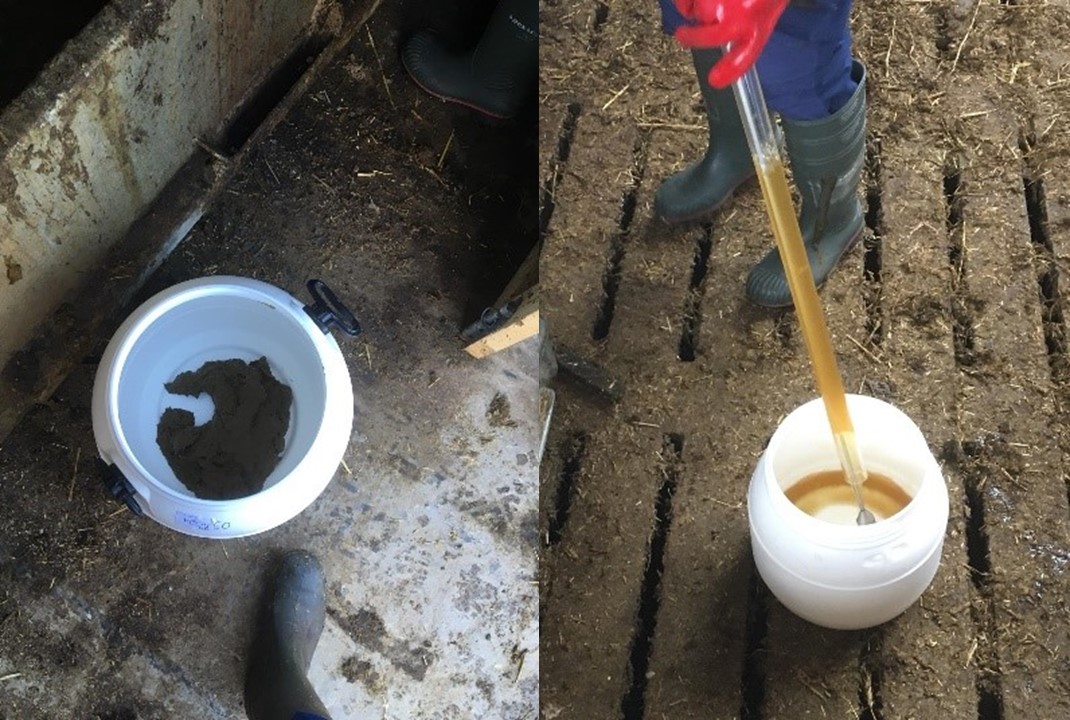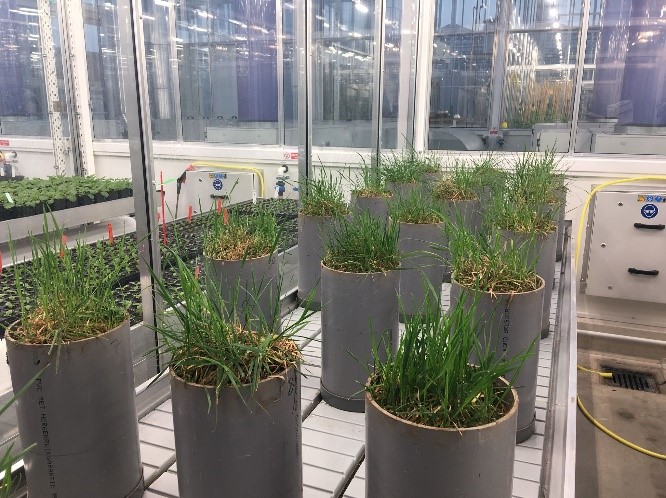The investigations on the efficacy of an integrated system to manage dairy manure reached the last stage of the chain

Figure 1: Dairy feces and urine collected from sourcesegregation floors
ESR-1 Jihane El Mahdi
Soil Application:
Starting with source segregation of dairy feces and urine, and following on the two fractions with simple combinations of treatments designed to limit NH3, N2O and CH4 emissions simultaneously will result in a 70% reduction of emissions in the whole chain and P application excess compared to traditionally managed slurry. That is the starting hypothesis of ESR-1 Jihane working at Wageningen University, which is half way into being tested.
The work started by collecting feces and urine (Figure 1) from different source segregation floors installed in Dairy Campus (Leeuwarden, The Netherlands) and comparing them in terms of the nutrients separations efficacy (mainly Nitrogen, Phosphorus and organic matter). Then the selected feces and urine were subjected to a series of complementary processing steps, and the resulting products were compared in terms of NH3, N2O and CH4 emissions in storage. The next step in preparation is to apply the products after storage to the soil, using intact soil profiles from an established grassland (Figure 2).

Figure 2: Soil columns taken from a permanent grassland to perform a manure application experiment
The results so far from the storage experiment seem promising with regard to limiting emissions. However, through the next experiment we want to investigate if our manure treatments will have any pollution swapping effect at soil application level. Another aim of the next experiment is to compare the fertilizing value of the manure products, as the integrated system is designed to reduce emissions in the chain but also optimize the fertilizing value of dairy manure.
